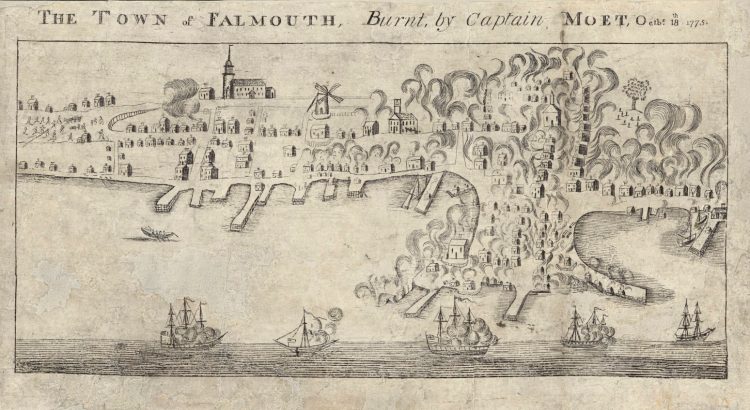May 9, 1775: With the onset of the Revolutionary War, Brunswick militiamen sneak into Falmouth (now Portland) and capture British Navy Lt. Henry Mowatt, captain of the 16-gun sloop-of-war HMS Canceaux, while he was on land.

In an incident that becomes known as Thompson’s War, the Canceaux’s crew threatens to shell the city unless Mowatt (also spelled “Mowat” or “Mowett,” depending on the source) is released. Six hundred militiamen from nearby towns gather while Falmouth residents negotiate to prevent bloodshed and destruction.
The militiamen hand Mowatt over to his crew but force the Canceaux to leave port on May 15.
Mowatt returns five months later aboard the Canceaux with four other ships and, in a nightmarish assault that haunts Maine residents for generations, destroys much of Falmouth with incendiary cannonballs.
May 9, 1894: A conflagration reduces almost all of the south side of Main Street in the Oxford County town of Norway to ashes.

The center of the town of Norway immediately after the fire of 1894. This photograph was taken from the mill yard where the fire started. The tall building at the center is Beal’s Hotel, at the corner of Cottage and Main streets. Image courtesy of the Norway Museum & Historical Society
The fire begins early in the afternoon in the C.B. Cummings mill, just across Pennesseewassee Stream from the town’s business district. Driven by an unusually strong, hot wind, it consumes the town’s opera house, the post office, a tannery, a church, two banks, two barber shops and several other retail businesses, as well as several homes.
Joseph Owen is a retired copy desk chief of the Morning Sentinel and Kennebec Journal and board member of the Kennebec Historical Society. He can be contacted at: jowen@mainetoday.com.
Note: This article was updated Wednesday, May 13, to remove incorrect information about the status of the Norway fire department at the time of the fire.
Send questions/comments to the editors.


